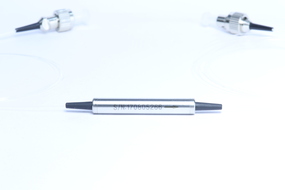A group of scientists from the Quantum Communications Competence Center of NTI, established on the basis of MISIS University, in partnership with the Russian Quantum Center, as well as researchers from the ITMO University, the National University of Defense Technologies (NUDT) in China and the Quantum Technology Foundation of Thailand (QTFT) protected quantum key distribution (QKD) systems from the light-injection attacks.The experiment was described in the PRX Quantum international journal and noted by the American Physical Society.
Several existing, off-the-shelf isolators and circulators could protect quantum key distribution (QKD) systems against a type of hacking known as light-injection attacks, a new experiment finds. These readily available devices either withstand the hacker’s assault or self-destroy to stop the entire QKD system and ensure quantum keys do not end up in the wrong hands. They thus function like an electrical safety fuse in a house.
QKD enables secret quantum keys to be sent over insecure channels. But there are risks with this type of transmission. If QKD isn’t performed exactly the right way, it becomes vulnerable to light-injection attacks, in which extra bright light it sneakily added to the QKD fiber and invisibly penetrates inside the secure stations to carry away bits of the secret key. To address this concern, physicists and security professionals alike have been searching for effective countermeasures to prevent these hacks.
Vadim Makarov and colleagues propose one solution: the addition of a sacrificial cheap device at the exit end of QKD fiber sources to resist light-injection attacks or break the quantum key transmission before hacking is successful. The researchers examined off-the-shelf optical isolators and circulators by burning them with a high-power fiber laser, and found that they could serve this function.
“The result of the work was the creation of reliable protection against this class of attacks, and not just the discovery of a vulnerability, which is not very clear how to deal with. We hope that the countermeasure we tested will be immediately applied in all industrial systems of quantum cryptography,” said Vadim Makarov, head at the Laboratory of Analysis of Practical Vulnerabilities of Quantum Cryptography Systems and Development of Certification Methods of the MISIS University Quantum Communications Competence Center of NTI.






